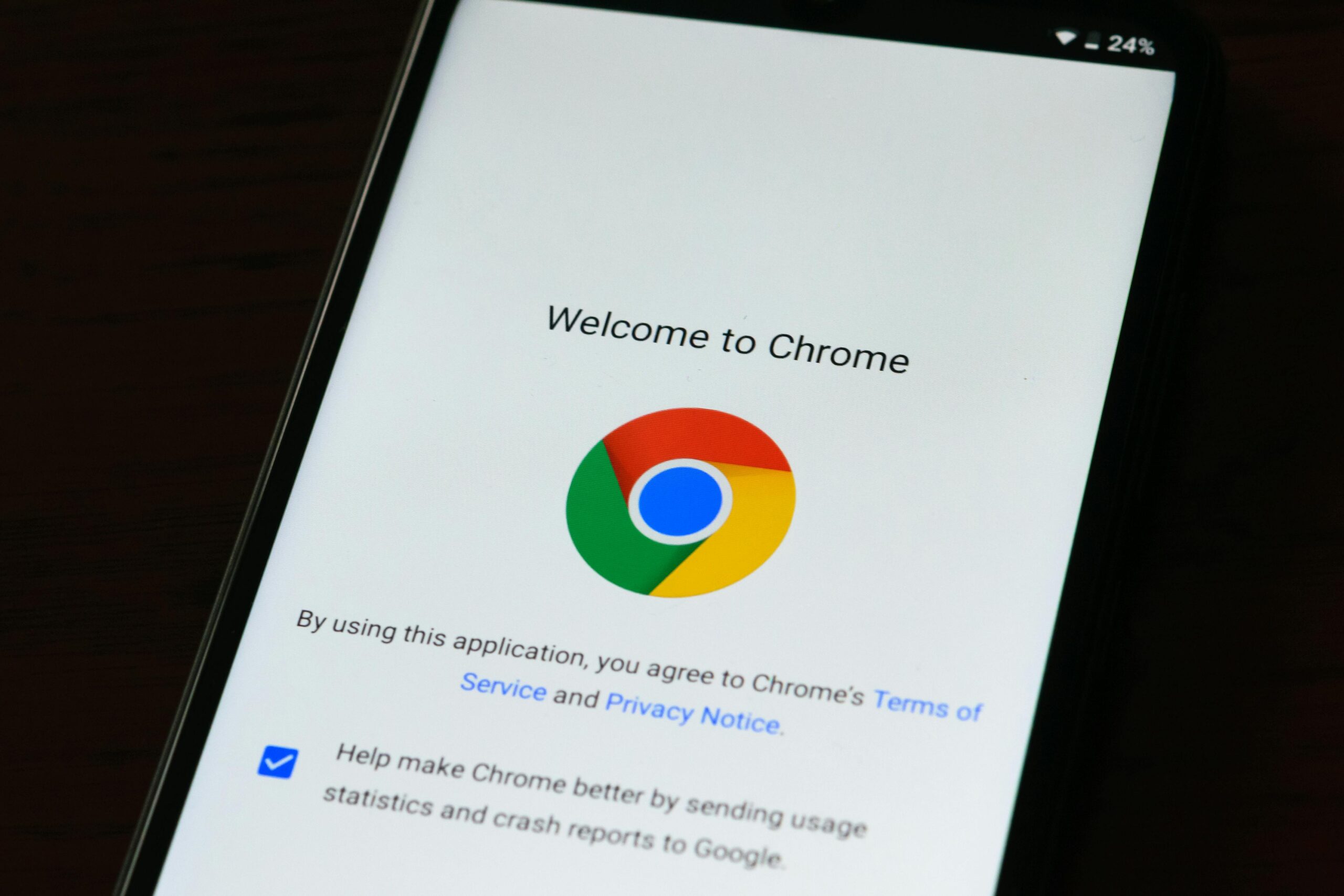As technology continues to evolve, search engines are placing more emphasis on mobile-friendly websites. With the majority of online traffic coming from mobile devices, businesses that fail to prioritize mobile optimization risk losing visibility and potential customers. The importance of mobile-first design for SEO in 2025 is more critical than ever, as Google and other search engines refine their ranking algorithms to favor mobile-responsive websites. Understanding Mobile-First Design Mobile-first design is an approach where websites are designed for mobile devices first and then adapted for larger screens like tablets and desktops. This method ensures that mobile users experience seamless navigation, fast load times, and easy accessibility. The importance of mobile-first design for SEO in 2025 lies in how well a website can deliver a user-friendly experience across all devices. Google has been prioritizing mobile-first indexing, meaning it primarily uses the mobile version of a site for ranking and indexing. Websites that are not optimized for mobile can suffer from lower rankings, reduced traffic, and poor user engagement. Why Mobile-First Design Matters for SEO Google’s Mobile-First Indexing Since Google switched to mobile-first indexing, it has become essential for businesses to ensure their websites are optimized for mobile devices. If a site does not perform well on mobile, it can negatively impact its search engine rankings. The importance of mobile-first design for SEO in 2025 will only grow as search engines continue refining their mobile-first policies. Improved User Experience A website designed with a mobile-first approach ensures smooth navigation, readable text, and fast loading speeds. Users are more likely to stay on a site that is easy to use, reducing bounce rates and increasing engagement. Search engines reward sites that provide a positive user experience, making mobile optimization a key factor for better rankings. Faster Page Load Speeds Mobile users expect websites to load quickly. Slow-loading pages lead to higher bounce rates and lost traffic. Google’s Core Web Vitals measure page performance, and sites with slow load times are ranked lower. The importance of mobile-first design for SEO in 2025 includes optimizing images, minimizing code, and leveraging caching to ensure a fast and smooth browsing experience. Key Elements of a Mobile-First Design Responsive Web Design A responsive website automatically adjusts to different screen sizes, providing an optimal viewing experience on all devices. Ensuring that a website is fully responsive is one of the core strategies in addressing the importance of mobile-first design for SEO in 2025. Mobile-Friendly Navigation Simplified menus, touch-friendly buttons, and easy-to-read content improve the overall experience for mobile users. Websites should focus on intuitive navigation to keep visitors engaged. Optimized Images and Media Large images and uncompressed media files can slow down a site. Optimizing images and using next-generation formats like WebP can improve page speed, enhancing both user experience and SEO performance. Structured Data for Mobile SEO Using structured data helps search engines understand website content better. Mobile-optimized schema markup improves rich snippets, making sites more appealing in search results. The Future of Mobile-First SEO in 2025 and Beyond As AI-driven search engines and voice search gain popularity, mobile-first design will become even more crucial. Websites that adapt to new search behaviors will gain a competitive advantage. The importance of mobile-first design for SEO in 2025 extends beyond just rankings; it plays a role in increasing conversion rates, enhancing credibility, and providing a seamless experience for users. Businesses that invest in mobile-first optimization now will be well-positioned for success in the evolving digital landscape. WebsiteSeoLeads emphasizes the need for brands to stay ahead of these changes by prioritizing mobile-friendly strategies that align with search engine expectations. Conclusion The importance of mobile-first design for SEO in 2025 cannot be ignored. As mobile usage continues to dominate, search engines are rewarding websites that offer a seamless and engaging experience on smaller screens. By implementing mobile-friendly design strategies, businesses can improve rankings, increase traffic, and provide users with a superior browsing experience. In a world where digital accessibility is key, adopting a mobile-first approach is no longer optional—it’s a necessity for online success.
How to Write Cold Emails That Get Responses
Cold emailing is one of the most effective ways to generate leads, build business relationships, and increase sales. However, many cold emails go unread or ignored because they fail to capture the recipient’s attention. Learning how to write cold emails that get responses can significantly improve engagement and conversion rates. A well-crafted cold email should be personalized, concise, and value-driven. It needs to stand out in a crowded inbox and give the recipient a compelling reason to reply. By following best practices, businesses can increase their chances of getting positive responses. Understanding the Basics of Cold Emails Before diving into how to write cold emails that get responses, it’s important to understand the purpose of a cold email. Unlike spam, cold emails are targeted and personalized messages sent to potential clients or business partners. They should be relevant, non-intrusive, and offer value to the recipient. The key elements of an effective cold email include: Crafting a Subject Line That Gets Opened The first step in how to write cold emails that get responses is creating a subject line that encourages the recipient to open the email. Since people receive countless emails daily, your subject line needs to be short, engaging, and relevant. Some effective strategies for subject lines include: For example: Personalizing Your Email for Maximum Engagement One of the biggest mistakes in cold emailing is sending generic messages. People are more likely to respond if they feel the email was written specifically for them. To personalize your email: For example:“Hi Sarah, I came across your recent blog on social media trends, and I found your insights on engagement strategies really valuable. I wanted to share an idea that could help [Company Name] generate more leads through targeted campaigns.” Clearly Communicating Your Value Proposition The core of how to write cold emails that get responses lies in offering value. Instead of focusing on what you want, highlight how you can help the recipient. To make your value proposition clear: For example:“I noticed that [Company Name] is expanding its online presence. At WebsiteSeoLeads, we specialize in helping businesses improve their search rankings and generate more organic leads. I’d love to share a quick strategy that could help increase your traffic by 30% in the next three months.” Crafting a Strong Call to Action A common reason cold emails don’t get responses is the lack of a clear call to action (CTA). Instead of ending the email with a vague closing, provide a specific next step. Some effective CTAs include: By making the CTA easy to act on, you increase the chances of getting a response. Following Up Without Being Pushy If you don’t get a response to your first email, a follow-up can make a difference. Many recipients are busy and may have overlooked your initial message. A polite follow-up reinforces your interest without being too aggressive. Best practices for follow-ups: Example:“Hi Sarah, just wanted to follow up on my last email. I know you’re busy, but I’d love to share a quick idea on how [Company Name] can improve its online presence. Let me know if you’re open to a quick chat.” Conclusion Mastering how to write cold emails that get responses requires a combination of personalization, clear value, and strategic follow-ups. By crafting engaging subject lines, personalizing messages, and providing a strong call to action, businesses can significantly improve their cold email success rates. With the right approach, cold emails can become a powerful tool for generating leads and building valuable connections. Implement these strategies, and you’ll see better engagement and higher response rates from your email outreach efforts.
The Power of LinkedIn for B2B SMM Lead Generation
LinkedIn has established itself as the go-to platform for professionals and businesses looking to connect, collaborate, and grow. Unlike other social media platforms, LinkedIn is specifically designed for networking, making it an essential tool for B2B SMM lead generation. Businesses that leverage LinkedIn effectively can attract high-quality leads, nurture relationships, and convert prospects into long-term clients. Understanding how LinkedIn contributes to B2B SMM lead generation is key for companies looking to expand their reach in the digital space. With the right strategy, LinkedIn can become a powerful driver of targeted leads and revenue growth. Why LinkedIn is the Best Platform for B2B SMM Lead Generation A Professional Audience Unlike Facebook, Instagram, or Twitter, LinkedIn is a platform where professionals engage with industry-related content. Decision-makers, executives, and business owners use LinkedIn to discover solutions that can benefit their companies. This makes it the ideal environment for B2B SMM lead generation, as businesses can connect directly with those who have purchasing power. Advanced Targeting Options LinkedIn’s advanced search and advertising features allow businesses to target potential clients based on industry, job title, company size, and location. This precision targeting ensures that outreach efforts reach the right audience, making B2B SMM lead generation more efficient and effective. Trust and Credibility A strong LinkedIn presence builds trust and authority within an industry. Sharing valuable content, engaging in discussions, and demonstrating expertise help businesses establish credibility. When potential clients see consistent thought leadership, they are more likely to engage, leading to better B2B SMM lead generation results. Strategies for Effective LinkedIn Lead Generation Optimizing Your LinkedIn Profile A well-optimized profile is the foundation of success on LinkedIn. Whether it’s a personal profile or a company page, having a professional image, clear descriptions, and relevant keywords increases visibility. Creating and Sharing Valuable Content Content plays a crucial role in attracting and nurturing leads. By regularly posting high-value content, businesses can keep their audience engaged and position themselves as industry leaders. Leveraging LinkedIn Groups for Lead Generation LinkedIn Groups offer an excellent way to engage with potential clients in specific industries. Joining relevant groups and actively participating in discussions can help businesses connect with decision-makers and generate quality leads. Using LinkedIn Ads to Target Decision-Makers Paid advertising on LinkedIn can significantly enhance B2B SMM lead generation efforts. With LinkedIn Ads, businesses can target users based on professional criteria, making campaigns highly effective. A well-structured ad campaign can drive targeted traffic to a website or landing page, resulting in more qualified leads. Nurturing LinkedIn Leads for Better Conversions Generating leads is just the first step. To maximize the effectiveness of B2B SMM lead generation, businesses need to nurture their connections and build strong relationships. Engaging with Connections Regularly interacting with connections by liking, commenting, and sharing their posts keeps businesses on their radar. Personalizing interactions helps build trust and increases the chances of turning leads into clients. Sending Personalized Messages Instead of generic connection requests, businesses should personalize their outreach messages. A well-crafted message that addresses a prospect’s challenges or interests has a higher chance of being accepted and leading to further conversations. Following Up Consistently Many leads require multiple touchpoints before making a decision. Sending follow-up messages, sharing additional resources, or inviting leads to webinars can keep them engaged. A strategic follow-up approach ensures that leads do not lose interest. Measuring LinkedIn Lead Generation Success Tracking and analyzing performance is essential for optimizing B2B SMM lead generation efforts. Businesses should monitor key metrics such as: By reviewing these insights, businesses can refine their strategies and improve lead generation outcomes. Conclusion LinkedIn is one of the most powerful tools for B2B SMM lead generation. Its professional audience, advanced targeting options, and credibility-enhancing features make it ideal for attracting and nurturing leads. By optimizing profiles, sharing valuable content, leveraging LinkedIn Groups, and using targeted ads, businesses can generate high-quality leads and drive long-term growth. WebsiteSeoLeads helps businesses maximize their LinkedIn strategies for better visibility and lead conversion. With the right approach, LinkedIn can become a primary channel for B2B success, helping businesses establish authority and achieve their marketing goals.
Why SEO is Crucial for Getting More Web Design Leads
In today’s competitive digital landscape, having a visually appealing website is not enough to attract clients. Businesses searching for web design services rely on search engines to find the right agency or freelancer. This is where SEO plays a crucial role. By optimizing your website for search engines, you increase your chances of reaching potential clients and generating more web design leads. Many web designers and agencies focus on creating stunning websites but overlook the importance of SEO in bringing in qualified leads. Without proper optimization, even the most well-designed website may struggle to rank on search engines, making it difficult to attract potential clients. Understanding how SEO impacts web design leads can help businesses build a strong online presence and consistently generate high-quality prospects. How SEO Helps Attract Web Design Leads SEO is the process of improving a website’s visibility on search engines like Google. When done correctly, it ensures that your site appears in front of people actively searching for web design services. Here’s how SEO contributes to getting more web design leads: Higher Search Engine Rankings The higher your website ranks on search engines, the more likely potential clients are to find your services. Most users do not go past the first page of Google, so ranking at the top increases your chances of capturing leads. By targeting the right keywords and optimizing on-page elements, you improve your ranking and attract more inquiries. Targeting the Right Audience SEO allows you to attract people who are already interested in web design services. By using relevant keywords such as “professional web design,” “custom website development,” and “website redesign services,” you ensure that your content reaches the right audience. This targeted approach results in more qualified web design leads. Building Trust and Credibility When your website ranks high on Google, it signals credibility and authority in your industry. Potential clients trust search engines to display the most relevant and reputable results. A strong SEO strategy, combined with quality content and customer testimonials, enhances your credibility and increases the likelihood of converting visitors into leads. Essential SEO Strategies to Get More Web Design Leads To attract more web design leads, implementing effective SEO strategies is essential. Here are some key tactics: Keyword Optimization Using the right keywords throughout your website helps search engines understand what your business offers. Incorporate keywords naturally in your content, headings, meta descriptions, and image alt texts. A well-researched keyword strategy ensures your site appears for relevant search queries. Content Marketing Publishing valuable content that addresses common client concerns can position you as an industry expert. Blog posts, case studies, and website design guides help educate potential clients and build trust. Content that includes SEO best practices will also improve search rankings and drive organic traffic. Mobile Optimization With most searches happening on mobile devices, having a responsive website is critical. Google prioritizes mobile-friendly websites, so ensuring your site loads quickly and functions seamlessly on all devices improves rankings and user experience, leading to more web design leads. Backlink Building Earning high-quality backlinks from reputable websites strengthens your domain authority and boosts search rankings. Networking with industry professionals, guest posting on relevant sites, and listing your business in online directories are effective ways to generate backlinks. Technical SEO A well-optimized website with clean coding, fast loading speed, and proper internal linking structure improves search engine crawling and indexing. Optimizing technical aspects of your site ensures it performs well in search results, making it easier for potential clients to find your services. Measuring SEO Success for Web Design Leads Tracking SEO performance is essential to ensure that your strategies are working. Key metrics to monitor include: By continuously analyzing these metrics, you can refine your SEO strategy and improve your chances of generating more web design leads. Conclusion SEO is a powerful tool for attracting web design leads and growing your business. By optimizing your website, targeting the right keywords, and implementing strong content and backlink strategies, you can improve search rankings and increase visibility. Businesses searching for web design services rely on search engines to find the best options, making SEO an essential investment for long-term success. WebsiteSeoLeads helps businesses optimize their SEO strategies to attract more qualified leads and improve their online presence. By leveraging SEO effectively, web designers and agencies can ensure a steady flow of high-quality leads and long-term business growth.
How Web Design Affects Your SEO Ranking
Web design and SEO go hand in hand when it comes to online success. A visually appealing website is important, but if it lacks SEO-friendly elements, it can struggle to rank on search engines. Many businesses overlook how web design affects your SEO ranking, focusing solely on content and keywords. However, design elements such as site speed, mobile-friendliness, and user experience all contribute significantly to search engine rankings. A well-structured and optimized website can improve visibility, attract more visitors, and enhance engagement. Understanding how web design affects your SEO ranking can help businesses create an online presence that is both functional and search engine-friendly. The Connection Between Web Design and SEO A website’s design influences how search engines and users interact with it. If a site is slow, difficult to navigate, or not mobile-friendly, visitors may leave quickly, increasing the bounce rate. Search engines interpret this as a sign that the website is not providing value, which can negatively impact rankings. By focusing on how web design affects your SEO ranking, businesses can improve both user experience and search engine performance. Key web design elements play a crucial role in making a website more accessible and easier to index. Key Web Design Factors That Impact SEO Mobile-Friendliness With most online searches happening on mobile devices, a responsive design is essential. Search engines prioritize mobile-friendly websites, and Google uses mobile-first indexing, meaning it ranks websites based on their mobile version. Ensuring that your website adapts to different screen sizes is a critical factor in how web design affects your SEO ranking. Site Speed and Performance A slow-loading website frustrates users and leads to higher bounce rates. Page speed is a confirmed ranking factor for search engines, making it crucial to optimize images, enable browser caching, and use fast hosting services. The faster your website loads, the better the user experience and the higher the likelihood of ranking well. Navigation and User Experience A well-organized website structure makes it easier for users to find information and for search engines to crawl pages efficiently. Clear menus, intuitive navigation, and an easy-to-follow site structure all contribute to positive user engagement. Poor navigation can lead to high exit rates, which negatively affects SEO rankings. Clean and SEO-Friendly Code Messy or outdated code can make it difficult for search engines to index a website properly. Using clean, structured, and optimized code ensures that search engines can understand and rank your site effectively. Utilizing proper HTML tags, schema markup, and metadata further strengthens your site’s SEO performance. Image Optimization Images play a significant role in website design, but large, unoptimized images can slow down page loading times. Properly compressing images, adding descriptive alt text, and using appropriate file formats help maintain speed and accessibility. This is an important aspect of how web design affects your SEO ranking. The Role of Content in Web Design and SEO While web design focuses on the layout and structure, content is what keeps users engaged. High-quality, well-organized content that aligns with user intent improves both engagement and search engine visibility. Readability and Formatting A website with well-structured content, including headings, bullet points, and short paragraphs, is easier to read and scan. Proper formatting not only enhances user experience but also helps search engines understand content relevance. Internal Linking Strategy Linking to relevant pages within your website helps distribute page authority and encourages visitors to explore more content. An effective internal linking strategy improves site navigation and contributes to how web design affects your SEO ranking. Secure and Accessible Website Search engines prioritize websites that are secure (HTTPS) and accessible to all users. Having an SSL certificate ensures data security, while accessibility features such as alt text, descriptive links, and clear fonts enhance usability. Measuring the Impact of Web Design on SEO To track how web design affects your SEO ranking, businesses should monitor: Regularly updating and optimizing web design elements can lead to long-term SEO success. Conclusion A well-designed website is essential for achieving high search engine rankings. Factors such as mobile-friendliness, site speed, user experience, and clean coding all contribute to how web design affects your SEO ranking. By prioritizing these elements, businesses can create a website that not only attracts visitors but also ranks well on search engines. WebsiteSeoLeads helps businesses optimize their web design for better SEO performance, ensuring a strong online presence and improved search rankings. Investing in SEO-friendly web design is a long-term strategy that leads to increased visibility, engagement, and business growth.
Why Case Studies Help You Close More Web Design Deals
In the competitive world of web design, potential clients want proof that your services can deliver real results. While a strong portfolio showcases your design skills, case studies go a step further by demonstrating the impact of your work. When presented effectively, case studies become powerful tools that help convert leads into paying clients. This article explores why case studies are essential for securing more web design deals and how you can use them to grow your business. The Power of Case Studies in Web Design Case studies provide detailed insights into how a web design project was executed and the results it achieved. Unlike generic testimonials, case studies tell a complete story, outlining challenges, solutions, and measurable outcomes. When potential clients see how your past projects have benefited others, they are more likely to trust your expertise and move forward with their own web design deals. Clients searching for web design services want assurance that their investment will lead to tangible improvements. Case studies offer proof of your problem-solving abilities, creativity, and technical expertise, making them essential for any web design business. How Case Studies Help Close More Web Design Deals Showcasing Real-World Results A well-structured case study highlights how your web design solutions have helped businesses overcome challenges and achieve success. Instead of just saying that you create high-quality websites, you provide evidence through data and real-world results. This reassures potential clients that your services can drive meaningful improvements in areas such as user engagement, conversion rates, and online visibility. Building Credibility and Trust Trust is a crucial factor in securing web design deals. Clients want to work with professionals who have a proven track record of success. By showcasing past projects and client experiences, case studies help establish credibility and reinforce your reputation as a reliable web designer. Businesses are more likely to choose a designer who can provide clear examples of success rather than one who only offers vague promises. Demonstrating Your Process and Expertise Every web design project comes with its own set of challenges. Case studies allow you to showcase your problem-solving skills and design process. From initial strategy to execution and final results, you can demonstrate how you tackle complex projects and deliver outstanding outcomes. This not only helps potential clients understand your approach but also sets realistic expectations for their own projects. Differentiating Your Business from Competitors The web design industry is crowded, and clients often struggle to choose the right service provider. Case studies give you a competitive edge by clearly illustrating what sets you apart from others. Whether it’s your unique design philosophy, your expertise in a specific industry, or your ability to improve website performance, case studies highlight the qualities that make your business the right choice for web design deals. Addressing Client Concerns and Objections Many potential clients hesitate to commit to web design services due to uncertainty about costs, timelines, or expected outcomes. Case studies help address these concerns by providing clear examples of how you’ve successfully handled similar projects in the past. Seeing positive results from other businesses can help reassure clients that investing in your services is a smart decision. Creating Effective Case Studies for Web Design Focus on the Client’s Problem and Your Solution A compelling case study starts with a clear explanation of the client’s challenge. Whether they needed a more user-friendly website, a complete redesign, or improved conversion rates, outlining the problem sets the stage for the success story. Follow up by detailing how your web design expertise provided the perfect solution. Include Data and Measurable Results Numbers speak louder than words. Whenever possible, include measurable data in your case studies. Highlight key performance indicators such as increased website traffic, higher engagement rates, reduced bounce rates, or a boost in conversions. These statistics provide concrete proof that your web design services deliver real value. Use Client Testimonials Adding direct quotes from satisfied clients enhances the authenticity of your case studies. A positive testimonial reinforces the impact of your work and adds a personal touch that resonates with potential customers. If possible, include before-and-after visuals to showcase the transformation your design services achieved. Keep It Clear and Engaging Your case studies should be easy to read and visually appealing. Use a structured format with clear headings, bullet points, and concise language. Avoid overly technical jargon, and focus on storytelling to make the case study engaging and relatable. Conclusion Case studies are an invaluable tool for closing more web design deals. They provide real-world proof of your expertise, build trust with potential clients, and differentiate your business from competitors. By showcasing your problem-solving skills, measurable results, and client success stories, you increase the likelihood of converting leads into paying customers. WebsiteSeoLeads understands the importance of leveraging strong case studies to drive business growth. As the web design industry continues to evolve, businesses that effectively use case studies will gain a competitive advantage and attract more high-quality clients. If you haven’t started creating case studies yet, now is the time to build a compelling portfolio that helps you secure more web design deals.
How to Attract High-Quality Web Design Leads for Your Business
Attracting high-quality web design leads is essential for growing your business and ensuring a steady stream of clients who value your expertise. With competition in the web design industry increasing, it’s important to implement strategies that not only generate leads but also attract potential clients who are serious about investing in professional web design services. Many web designers struggle with getting consistent leads, often dealing with inquiries from clients who have unrealistic budgets or lack a clear understanding of their needs. By focusing on strategies that target high-quality web design leads, you can ensure that your efforts bring in the right clients, leading to better projects and long-term business success. Understanding What Makes a Lead High-Quality Not all leads are the same. A high-quality web design lead is one that comes from a business or individual who: Targeting such clients requires a well-planned approach that includes effective marketing, strategic content, and lead qualification techniques. Optimize Your Website for Lead Generation Your website is your strongest tool for attracting high-quality web design leads. To make it more effective, consider the following: Content Marketing to Build Authority Creating valuable content is an effective way to attract high-quality web design leads. Businesses searching for web design services often start their journey by researching solutions to their problems. Providing educational content can position you as an expert in the field. Leverage Social Media and Online Communities Social media platforms are powerful tools for attracting leads, but the key is to focus on the right platforms where potential clients are active. By consistently engaging with your audience and providing value, you can attract high-quality web design leads who trust your expertise. Use Paid Advertising for Targeted Reach While organic methods are essential, running paid advertising campaigns can help you reach potential clients faster. Networking and Partnerships Building relationships within your industry can help attract high-quality web design leads. Qualifying Leads for Better Conversion Once leads start coming in, it’s important to filter them to ensure they are high-quality web design leads. Ask the right questions, such as: These questions help determine if a lead is a good fit for your services. Conclusion Attracting high-quality web design leads requires a combination of strategic marketing, strong online presence, and effective lead qualification. By optimizing your website, leveraging content marketing, engaging on social media, using targeted advertising, and networking with industry professionals, you can ensure a steady stream of valuable leads. WebsiteSeoLeads understands the importance of generating quality leads that convert into real business opportunities. By implementing the right strategies, you can attract clients who appreciate the value of professional web design and are ready to invest in your services.
SMM Leads vs. SEO Leads: Which is Better for Your Business?
Lead generation is one of the most important aspects of digital marketing. Businesses need a steady stream of qualified leads to grow and sustain long-term success. However, when it comes to choosing the right lead generation strategy, many businesses find themselves debating between SMM leads vs. SEO leads. Both methods offer unique advantages, but which one is better suited for your business? To make an informed decision, it’s important to understand how SMM leads vs. SEO leads work, their benefits, and which strategy aligns best with your business goals. Understanding SMM Leads SMM (Social Media Marketing) leads are generated through social media platforms such as Facebook, Instagram, LinkedIn, and Twitter. These leads come from users who engage with social media posts, ads, and campaigns. Benefits of SMM Leads Understanding SEO Leads SEO (Search Engine Optimization) leads are generated through organic search traffic. These leads come from users who search for relevant keywords and find a business’s website in search engine results. Benefits of SEO Leads SMM Leads vs. SEO Leads: Key Differences Feature SMM Leads SEO Leads Lead Generation Speed Fast Slow but steady Lead Quality Medium High Cost Requires ongoing ad spend Requires initial effort but lower long-term costs Targeting Highly customizable Based on organic search intent Longevity Short-term Long-term Brand Credibility Moderate High Which Strategy is Right for Your Business? The choice between SMM leads vs. SEO leads depends on your business goals, budget, and marketing timeline. The Best Approach: A Combination of Both Instead of choosing between SMM leads vs. SEO leads, many successful businesses use both strategies together. Social media can drive quick engagement, while SEO builds a long-term foundation for continuous lead generation. For example, businesses can use social media ads to attract immediate traffic while working on SEO to improve organic search visibility. This dual approach ensures a steady stream of leads from different sources. Conclusion Both SMM leads vs. SEO leads offer unique benefits, and the right choice depends on your business objectives. Social media marketing is great for instant engagement and short-term results, while SEO provides sustainable, high-quality leads over time. WebsiteSeoLeads understands the importance of choosing the right lead generation strategy. By integrating both SMM and SEO, businesses can maximize their reach, attract qualified leads, and build long-term success in the digital landscape.
How to Use Facebook Ads for Lead Generation
Facebook remains one of the most powerful digital advertising platforms for businesses looking to grow their customer base. With billions of active users and advanced targeting options, it provides an excellent opportunity to reach potential leads. Knowing how to use Facebook ads for lead generation effectively can help businesses increase conversions, build their email lists, and drive sales. This guide explores the best strategies to use Facebook ads for lead generation and ensure that your campaigns deliver high-quality leads. Why Use Facebook Ads for Lead Generation? Generating leads is essential for business growth, but attracting the right audience is just as important. Facebook’s sophisticated targeting tools allow businesses to reach users based on demographics, interests, and behaviors. This ensures that ads are displayed to people who are most likely to convert. Additionally, Facebook offers built-in lead generation tools, such as Lead Ads, which allow users to submit their contact information directly through the platform without leaving the app. This streamlined process increases the chances of capturing leads efficiently. Setting Up Your Facebook Lead Generation Campaign Define Your Campaign Goals Before running an ad campaign, it’s crucial to determine your objectives. If the primary goal is to use Facebook ads for lead generation, the campaign should focus on collecting email addresses, phone numbers, or other valuable contact information from potential customers. Choose the Right Ad Format Facebook offers various ad formats, but for lead generation, some of the most effective options include: Selecting the right format ensures that the ad resonates with the target audience and drives maximum engagement. Create a Compelling Offer To attract leads, businesses need to provide something valuable in exchange for user information. This could include: A well-designed offer increases the chances of users submitting their contact details, making it easier to use Facebook ads for lead generation. Targeting the Right Audience One of the main advantages of Facebook advertising is its advanced targeting capabilities. Businesses can reach specific audiences based on: Using these targeting options effectively ensures that ads reach users who are most likely to engage and convert. Optimizing the Lead Capture Process Keep Forms Simple When using Lead Ads, it’s important to keep forms as short and simple as possible. Asking for too much information can discourage users from completing the form. Typically, requesting just a name and email address is sufficient for initial contact. Use Clear and Engaging Copy The ad copy should be straightforward, persuasive, and highlight the benefits of the offer. Using action-driven language like “Download Now,” “Sign Up Today,” or “Get Your Free Guide” encourages users to take the next step. Include a Strong Call to Action (CTA) A compelling CTA is crucial for conversions. Facebook allows businesses to choose from various CTA buttons such as: Selecting the right CTA aligns with the campaign goal and encourages users to take action. Measuring and Improving Ad Performance Tracking the performance of Facebook ad campaigns is essential to determine what’s working and what needs improvement. Key metrics to monitor include: If an ad isn’t performing as expected, testing different elements such as images, copy, targeting, and offers can help optimize results. Retargeting and Nurturing Leads Capturing leads is just the beginning. Businesses need to follow up with potential customers through email marketing, retargeting ads, and personalized content. Facebook’s retargeting features allow businesses to reconnect with users who engaged with their ads but didn’t convert initially. By maintaining consistent communication and providing value, businesses can turn leads into loyal customers over time. Conclusion Knowing how to use Facebook ads for lead generation can significantly impact business growth. By setting clear goals, targeting the right audience, creating compelling offers, and optimizing the lead capture process, businesses can generate high-quality leads efficiently. WebsiteSeoLeads understands the importance of digital advertising and lead generation. With the right strategies, businesses can maximize their Facebook ad campaigns, increase conversions, and build a strong customer base.
Real Estate Marketing: How to Use Google Ads for More Leads
The real estate industry is highly competitive, and generating quality leads is essential for success. While traditional marketing methods like networking and referrals still play a role, digital advertising has become the most effective way to attract potential buyers and sellers. One of the most powerful tools in real estate marketing is Google Ads. With the right strategy, real estate professionals can use Google Ads to reach targeted audiences, increase visibility, and generate high-quality leads. This blog explores how Google Ads can enhance real estate marketing efforts and provide actionable tips to maximize results. Why Google Ads Matter in Real Estate Marketing Google Ads allow real estate businesses to appear at the top of search results when potential clients look for properties, agents, or related services. Unlike organic SEO, which takes time to build, paid advertising provides immediate visibility, making it an excellent option for real estate marketing. Some key benefits of using Google Ads in real estate marketing include: Setting Up a Successful Google Ads Campaign for Real Estate Marketing To maximize the effectiveness of Google Ads, real estate professionals should follow a structured approach. Keyword Research and Selection The foundation of a strong Google Ads campaign is choosing the right keywords. Since real estate marketing relies on targeted searches, using high-intent keywords is crucial. Some examples include: Long-tail keywords are particularly effective because they have lower competition and indicate strong buyer intent. Creating Compelling Ad Copy The ad copy should be clear, persuasive, and action-oriented. A good real estate marketing ad should include: Landing Page Optimization An effective Google Ads campaign doesn’t just stop at the ad itself. The landing page where users are directed should be optimized for conversions. Key elements of a high-performing real estate landing page include: Geo-Targeting and Audience Segmentation Real estate marketing with Google Ads works best when targeting specific locations. By setting up geo-targeting, agents and real estate companies can ensure their ads appear only to users searching within a certain radius. Additionally, audience segmentation can help target users based on behaviors, such as those who have visited real estate websites or shown interest in home buying. Budgeting and Bidding Strategy Google Ads operates on a pay-per-click (PPC) model, meaning advertisers only pay when someone clicks on their ad. A well-planned budget ensures that real estate marketing campaigns remain cost-effective. Tracking and Improving Google Ads Performance A successful real estate marketing campaign requires continuous monitoring and optimization. Some important performance metrics to track include: Real estate professionals should regularly test different ad variations, adjust bidding strategies, and refine targeting to improve results. Conclusion Google Ads is a powerful tool in real estate marketing, offering targeted reach, immediate visibility, and high conversion potential. By using the right keywords, crafting compelling ad copy, optimizing landing pages, and continuously tracking performance, real estate professionals can generate high-quality leads and grow their business. WebsiteSeoLeads understands the impact of digital marketing in the real estate industry and provides expert solutions to enhance lead generation efforts. Implementing a well-structured Google Ads strategy can give real estate professionals a competitive edge and drive more qualified buyers and sellers to their listings.










